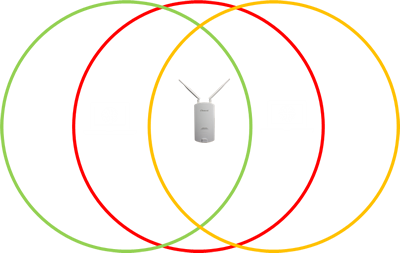WLAN Security
As data is transmitted through the air on radio waves in a wireless network, it is more susceptible to hackers trying to intercept the message. On a wired network they would have to physically connect to be able to intercept a
message. For this reason data is encrypted using WPA3 so that if it is intercepted during transmission it cannot be understood. WPA3 is the latest wireless encryption protocol building on previous versions and the original WEP.
Each wireless network has a service set identifier or SSID for short. It is possible to disable the broadcast of your local network so it does not show up to people searching for it. It is still possible to connect to the network
if you know the correct details for it.
If a WLAN has a known set of users and only they should have access, then a white list can be created with the MAC addresses of those devices that are allowed on the network. Any other device that attempts to join will be
rejected.
CSMA/CA
CSMA/CA stands for Carrier Sense Multiple Access/Collision Avoidance and is used to ensure signals sharing the same wireless access point don't collide. Any device that wants to transmit on the wireless network first listens
for network traffic. If it detects another device transmitting then it will wait a random amount of time and check again. Only if there is no traffic does it send data to the wireless access point.

The hidden node problem
CSMA/CA alone cannot account for what is known as the hidden nodes problem. This is where two devices are both within range of the wireless access point, but too far apart to be able to detect each other.

CSMA/CA with RTS/CTS
CSMA/CA with RTS/CTS means with request to send and clear to send. A device that listens and detects no traffic sends a request to send(RTS) and if the wireless access point can detect no other traffic it sends back a clear
to send(CTS) and the data is transmitted. This eliminates the problem of a hidden node broadcasting at the same time.
